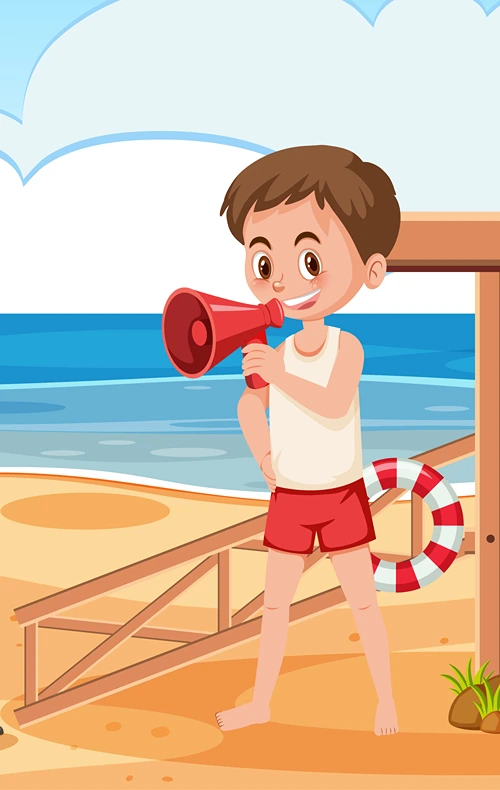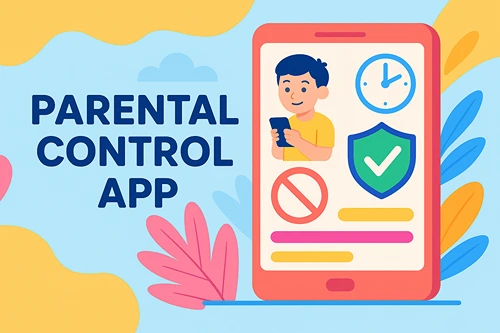Does Your Child Know How to Stay Safe in Open Water?
As a parent, you vigilantly watch your child at the pool. But what happens at the beach, lake, or river? The rules change dramatically outside the controlled pool environment, where currents, waves, and unexpected drop-offs can make the water far more dangerous than it looks.
For children ages 1 to 4, drowning is the leading cause of death in the United States. This risk underscores that the skills learned in a formal setting are a primary defense.
This knowledge is vital.
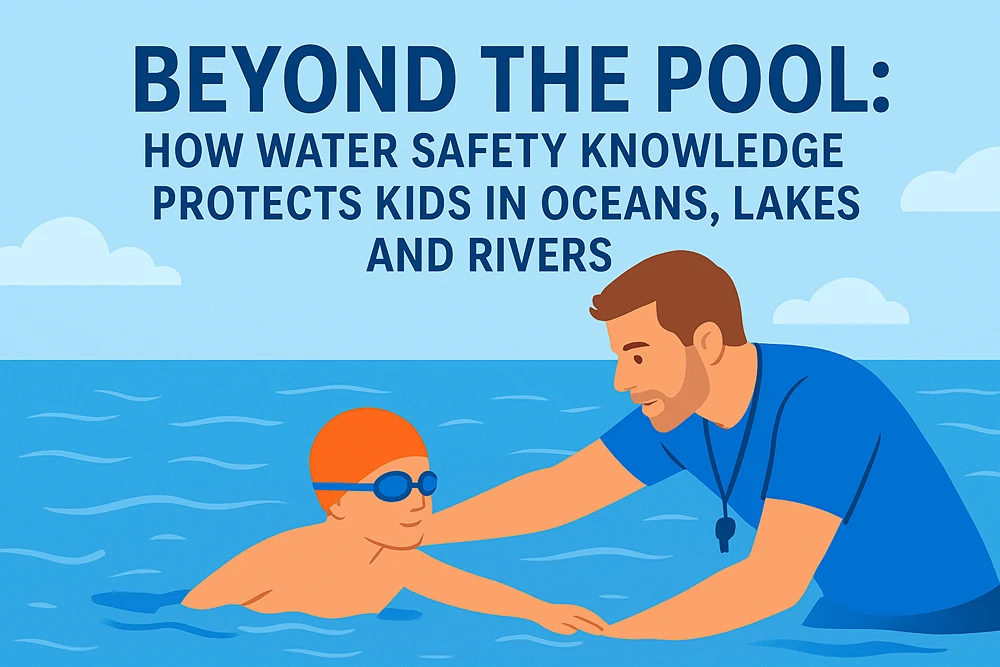
Professional instruction provides a foundation that protects children everywhere. It’s about more than strokes; it’s about survival competence in unpredictable situations. This preparation supports safe aquatic experiences in any setting.
The Unpredictable World of Open Water
A swimming pool is a controlled, predictable environment. The water is clear, the depth is marked, and the edges are defined. Open water, by contrast, is full of variables that can challenge even a strong swimmer.
Oceans introduce powerful forces like waves, rip currents, and undertows. A child can be knocked off their feet by a wave or pulled rapidly away from shore by a current they cannot see, a danger highlighted by the National Oceanic and Atmospheric Administration. The power of the ocean is relentless.
Lakes and Ponds often have limited visibility, hiding hazards like submerged logs, rocks, or sudden drop-offs. Water temperatures can be deceptively cold, leading to muscle cramps or cold water shock.
Rivers and Streams add the element of moving current, which can sweep a child downstream. They may also have obstacles like branches, rocks, and uneven, slippery bottoms that make entering and exiting the water hazardous.
Understanding these risks is a first step. The next is proactive preparation. This isn’t about instilling fear, but about building competence. The controlled environment of a swimming pool is the right classroom for these lessons.
This is the core philosophy behind professional swim classes, such as those focused on building a fundamental water safety toolkit from the very first lesson. A quality program is built to do more than teach a child how to cross a pool; it’s about establishing competencies that last a lifetime. For instance, at our local swim school, certified instructors focus on real-world applications—practicing floating to conserve energy, learning to navigate without a clear line on the bottom, and knowing how to stay calm if a situation feels unfamiliar. As outlined by the American Red Cross, comprehensive lessons include these critical skills for various environments. This training provides the muscle memory and mental confidence that translates from the pool to any body of water.
For parents, enrolling in structured instruction is a strong strategy for ensuring your child doesn’t just know how to swim, but knows how to be safe. This foundational knowledge is a powerful layer of protection for a lifetime of aquatic enjoyment.
Infographic:
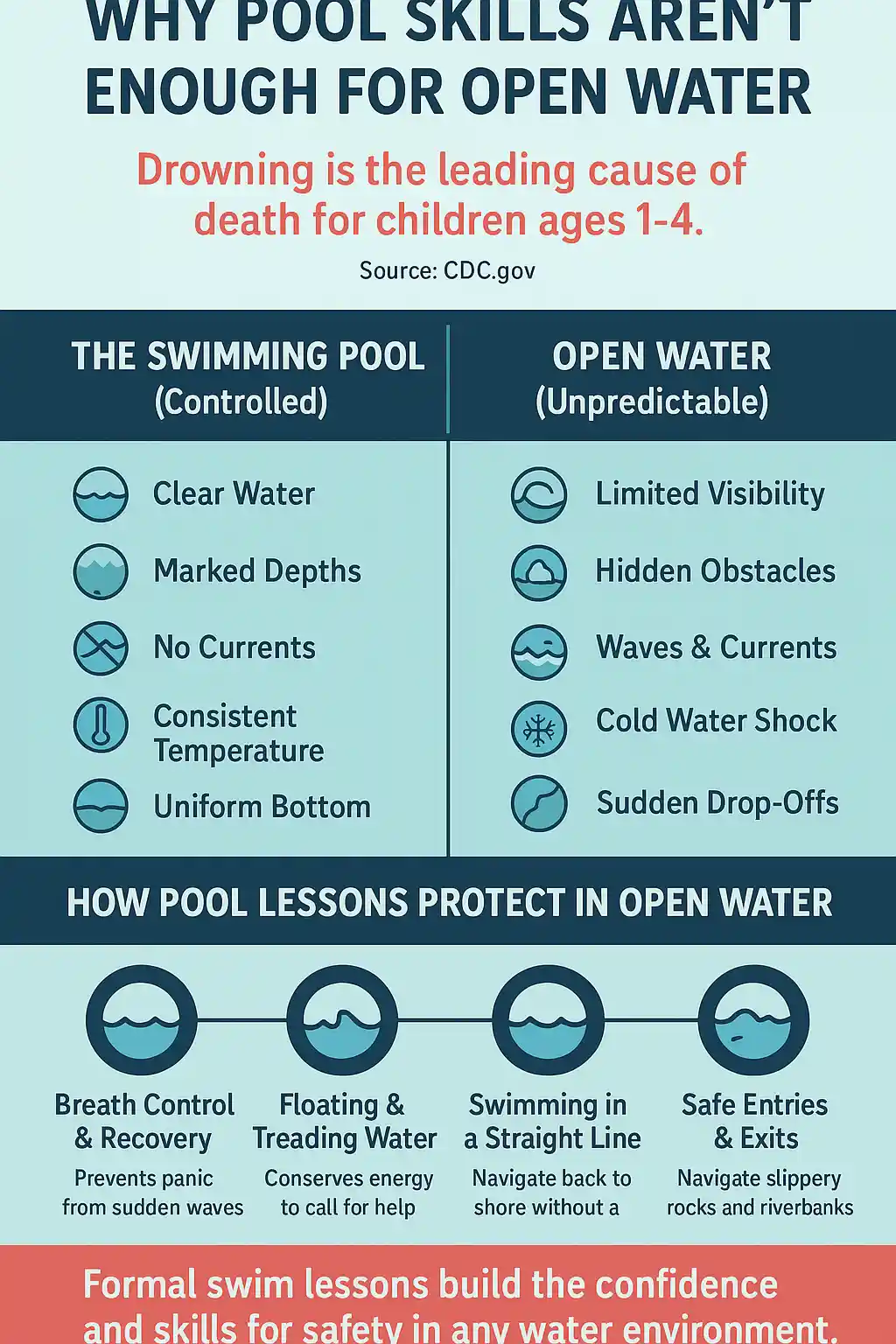
Skills Learned in Class That Apply Everywhere
So, what specific competencies from professional lessons become important tools in open water?
- Breath Control and Recovery
A sudden wave at the beach or an unexpected submersion in a lake can be alarming. Professional lessons teach children how to hold their breath, control their exhalation, and recover to the surface without panicking. This skill is a first defense against inhaling water.
- Floating and Treading Water
Exhaustion is a major cause of drowning in open water. The ability to roll onto their back and float or efficiently tread water allows a child to rest, conserve energy, call for help, and formulate a plan to get to safety. This is one of the most important skills for drowning prevention.
- Swimming in a Straight Line
In a pool, a black line on the bottom provides guidance. In open water, there are no such markers. Lessons teach children to lift their heads to sight a landmark (like the shore) while maintaining an efficient stroke. This prevents them from swimming in circles and wasting energy when trying to return to safety.
- Safe Entries and Exits
Jumping into a pool from the side is straightforward. Entering a lake from a slippery dock or a rocky beach is not. Quality instruction includes practicing cautious entries and exits, teaching children to always check depth and look for obstacles before getting in or out of any body of water.
- Recognizing and Responding to Hazards
A core component of water safety is education. Good instructors teach students to identify potential dangers, such as avoiding areas where waves are breaking. They learn to understand what different currents might look like and know to get out of the water at the first sign of changing weather.
Confidence: The Invisible Life Jacket
A valuable gift from formal lessons is confidence. Panic is the enemy in any emergency. A child who has been trained to handle unexpected situations in a controlled setting is far less likely to panic in a real-world scenario. This practiced calm allows them to recall their training and use the skills that will keep them safe.
Addressing Common Parental Concerns
- “My child is a good pool swimmer. Isn’t that enough?”
Pool swimming is a strong foundation, but it’s not complete preparation. Open water requires additional skills like environmental awareness, energy conservation, and dealing with currents. Professional lessons bridge this gap.
- “We always use life jackets on the boat.”
Life jackets are absolutely necessary for boating. However, accidents can happen in the moments a jacket isn’t on. In these scenarios, innate water safety skills are what protect your child.
- “I’m always right there watching them.”
Parental supervision is a critical safety layer. A moment of distraction is all it takes. A child who is equipped with skills and confidence has a layer of protection from within.
Building a Foundation for Safety
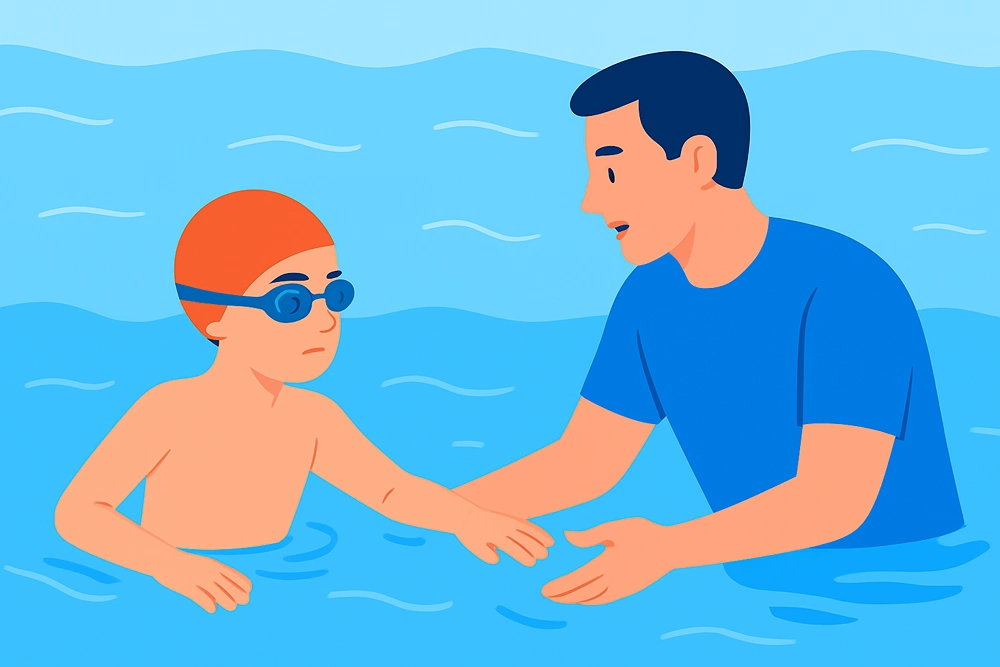
The goal is not to avoid water, but to empower your child to enjoy it respectfully and safely. The ocean, lakes, and rivers offer family fun and connection with nature. By investing in professional instruction, you are providing them with an important life skill. This is a core part of drowning prevention strategies from the Centers for Disease Control and Prevention, which underscores the value of formal swimming lessons as a protective measure.
You are building their confidence from the inside out, ensuring that wherever their adventures take them, they carry the knowledge and ability to assess risks, respect the water, and protect themselves. This peace of mind is a significant reward for any parent.

